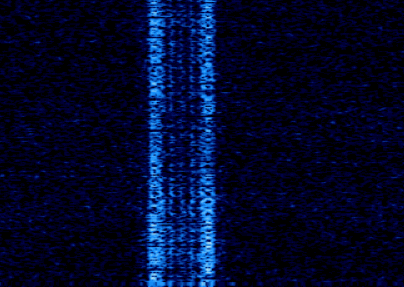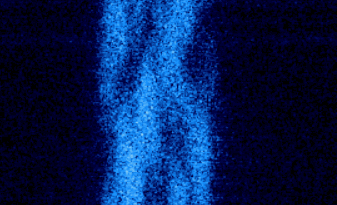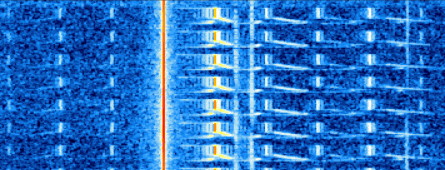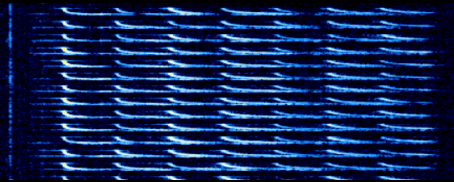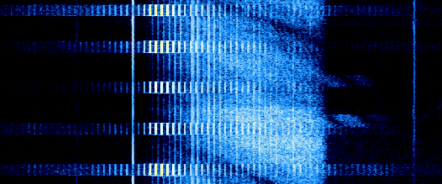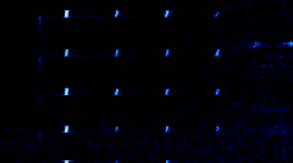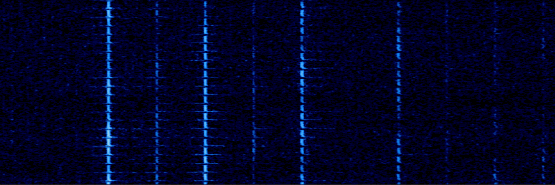Table of Contents
Preface
So, you have acquired for yourself a HAM radio with capabilities within the amateur bands (up to  ) and are wondering what interesting things you could listen to? The following cumulative tutorial shall list some of the interesting things taking place on the amateur radio frequencies.
) and are wondering what interesting things you could listen to? The following cumulative tutorial shall list some of the interesting things taking place on the amateur radio frequencies.
Number Stations
Number stations have been an effective method, mostly in the past, to broadcast orders to clandestine spies. There are several known stations, mostly East European such as Polish or Russian that are still in effect today.
The Pip
The Pip is a nickname given to a number station that broadcasts on  by day, and
by day, and  during the night, that typically emits a short series of "pip" sounds and occasionally the broadcast is interrupted by a Russian voice.
during the night, that typically emits a short series of "pip" sounds and occasionally the broadcast is interrupted by a Russian voice.
The Clear-Channel Frequency
In any emergency, a good frequency to remember is the clear-channel frequency  that is filed as a Class A for radio stations in North America that allows the stations to broadcast with up to
that is filed as a Class A for radio stations in North America that allows the stations to broadcast with up to  of power.
of power.
Searching around the  frequency mark, in many regions of the Earth, typically reveals several powerful radio stations that are tightly knit to the government due to the leniency extended for powerful transmissions.
frequency mark, in many regions of the Earth, typically reveals several powerful radio stations that are tightly knit to the government due to the leniency extended for powerful transmissions.
Radio Signal Identification
One of the musts after acquiring a HAM radio, is the capability to hook up the HAM radio sound output to an FFT waterfall analyser that has the capability of displaying the sounds visually. In doing so, and depending on the shape of the sounds, signals can be identified much easier than having to just listen to the audio.
Several protocols exist that encode data using audio signals and this section will help you identify them (image source priyom.org).
Morse Code (CW)
Morse code is displayed on an FFT waterfall as a series of dots and dashes (dits and dahs). One dash is supposed to have the equivalent length of three dits.
. -
In order to decode CW, the best way is to learn the morse code alphabet or use a decoder; however, decoders typically do not perform very well or are mostly absolutely trash.
FSK
Frequency Shift Keying (FSK) is a data transmission protocol that is typically  wide. If you have a decoder, once the data stream is intercepted, the output will typically result in a string of numbers. These numbers, when recomposed properly either spell out a message or even some data.
wide. If you have a decoder, once the data stream is intercepted, the output will typically result in a string of numbers. These numbers, when recomposed properly either spell out a message or even some data.
MFSK
Multiple Frequency Shift Keying (MFSK) is similar to FSK, just that multiple frequencies are used such that the data becomes dispersed through the frequency spectrum.
STANAG
Russian Military Markers
All these spectra reflect markers that precede a Russian military transmission. These signals are sent to reserve the frequency before a transmission occurs. Typically these can be found on the following frequencies:
 ,
, ,
, ,
, ,
, ,
, ,
, ,
, ,
, ,
, ,
,
WSJT-X
WSJT-X is a program that enables the use of various digital mode protocols such as FT8 to be used in order to communicate via SSB with remote radio stations. The following screenshot is taken from the WSJT-X waterfall spectrum analyser and depicts several stations communicating on the  band.
band.
Typically, WSJT-X, unlike AM or CB/FM is not designed for ragchew such that the messages being exchanged are short strings pertaining to radio signal strength being exchanged between various HAM operators.
Citizen Band
The Citizen Band (or, Chicken Band) is a set of allocated frequencies (notice that it is typically a set of distinct values, as opposed to a contiguous interval of frequencies) that can be used by anyone that has a radio able to operate around the  frequency mark without needing a license.
frequency mark without needing a license.
This set of frequencies is labeled with "channels" ranging from  to
to  with the channel
with the channel  , corresponding to the
, corresponding to the  frequency, reserved for emergency transmissions. Typical (due to the channels not really being regulated) usage of the channels varies regionally from country to country but there is no strict regulation regarding the usage of the channels.
frequency, reserved for emergency transmissions. Typical (due to the channels not really being regulated) usage of the channels varies regionally from country to country but there is no strict regulation regarding the usage of the channels.
Skyking (High Frequency Global Communications System)
The High Frequency Global Communications System (HFGCS) is a network of SSB/USB transmitters mainly used by the United States Air Force (USAF) that are meant to broadcast emergency messages. The frequencies that HFGCS operates on are the following:
 during the daytime,
during the daytime,  during nighttime,
during nighttime,  Military Auxiliary Radio System (MARS),
Military Auxiliary Radio System (MARS), Canadian Forces,
Canadian Forces,
The messages that are broadcast are comprised of short voice messages.
For the contact, copyright, license, warranty and privacy terms for the usage of this website please see the contact, license, privacy, copyright.
